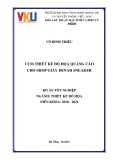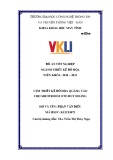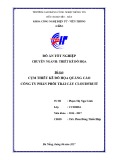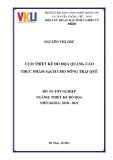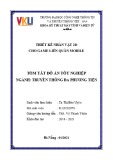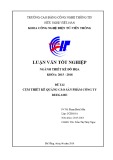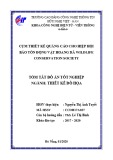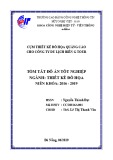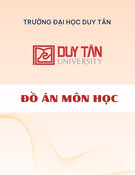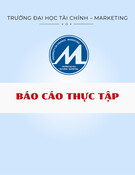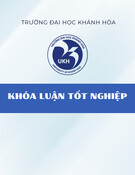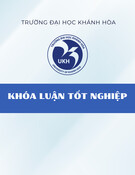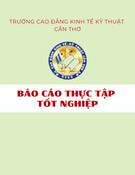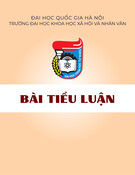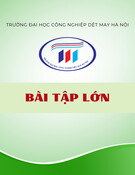
Fetishising language: typography and postfeminism in late capitalism
A thesis submitted in fulfilment of the requirements for the degree of Master of Design
Manuela (Ella) Louise Egidy
School of Design
College of Design and Social Context
RMIT University
July 2021

I
I certify that except where due acknowledgement has been made, the work is that of the
author alone; the work has not been submitted previously, in whole or in part, to qualify for
any other academic award; the content of the thesis is the result of work which has been
carried out since the official commencement date of the approved research program; any
editorial work, paid or unpaid, carried out by a third party is acknowledged; and, ethics
procedures and guidelines have been followed.
I acknowledge the support I have received for my research through the provision of an
Australian Government Research Training Program Scholarship.
Manuela (Ella) Louise Egidy
06 July 2021

II
This research was undertaken on the unceded lands of the Wurundjeri and Boon Wurrung
people of the Kulin nation. I pay my respects to their elders and ancestors past, present and
emerging. Sovereignty was never ceded. Always was, always will be aboriginal land.

III
ACKNOWLEDGMENT
I would like to acknowledge the many people over the past few years that provided support
throughout this research. Firstly, my two supervisors Cathy Greenfield and Brad Haylock
for the countless hours of discussion, conversation and feedback that has had a profound
impact on shaping this research. Their constant support and encouragement was crucial to
the completion of this thesis.
I would also like to acknowledge the generous feedback of the members of a
biweekly reading group that was convened by Brad Haylock: Adam Cruickshank, Stuart
Geddes, James Langdon, Fraser Muggeridge, Megan Patty, Jael Rincon and Žiga Testen.
A year of this research was undertaken while dipping in and out of various lockdowns in
Melbourne, Australia and the many hours of critical discussions with the members of this
group had a significant impact on this research.

IV
ACKNOWLEDGMENT III
LIST OF FIGURES VI
ABSTRACT 1
INTRODUCTION 2
Research question, aims and overview 2
Situating the research 4
Aesthetics, rhetoric, materialism and graphic design 5
Disciplinary context 6
Theoretical framing: feminist theories of language 8
Objects of enquiry 11
KEY THEORETICAL FRAMEWORKS: SEMIOLOGY AND CONSTRUCTIONISM 13
METHODOLOGY 17
Pluralities and polysemy: Critical Discourse Analysis 17
Schema of analysis 20
Overview of case studies 21
Case study 1: We should all be (commodity) feminists 21
Case study 2: Neo(n)liberal Feminism 22
Case study 3: (Ineffectual) narratives of subversion 23
CONTEXTUAL REVIEW PART 1: THEORIES OF FEMINISM AND COMMODIFICATION 25
Commodity-feminist-subject-in-process 25
Sociology of consumption: inverse forms of imitation 28
The fetishism of the commodity 33
Commodity feminism 35
Exploitation of labour: Corporeality systems premised on exploitation 35
The postfeminist condition 38
Hegemony: Naturalising Domination 41
Redistribution, recognition and representation 41
“Girl Power” and the Gendering of Typography 44
CONTEXTUAL REVIEW PART 2: GRAPHIC DESIGN DISCOURSE 46
Typography: An object of Circumstance 46
Situating the discipline 50



